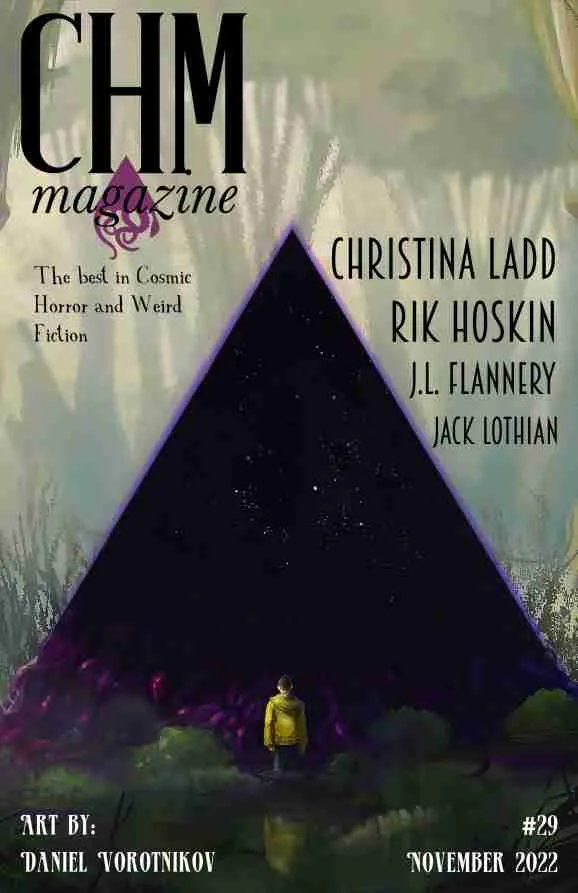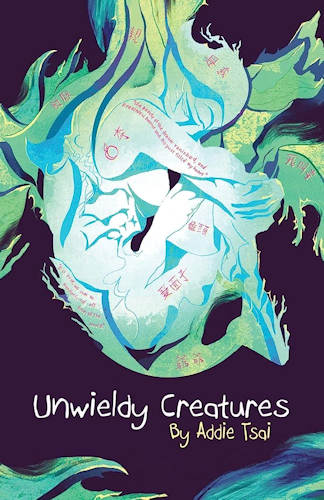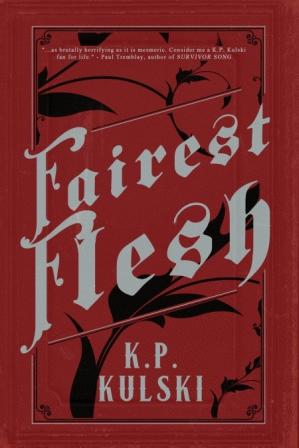Welcome back to part two of our Pride Month Horror Roundtable! Today, we discuss LGBTQ+ representation in horror as well as favorite queer authors!
And with that, I’ll let our featured writers take it away!
How, if at all, do you feel that LGBTQ+ representation in horror and speculative fiction
has changed over the last few years?
 CHRISTINA LADD: It’s hard to separate out my own experience of reading horror from the genre itself, since I am in no way an expert—I’m a fan, first and foremost, and I read where my on predilections take me. So with that caveat, I’ve been very happy to see queerness presented as a nonissue more and more often; it’s ubiquitous, normal, and quietly foundational instead of centered as The Conflict. There are, of course, also books in which queer concerns are central, and I like those too! However, queer universality delights me in large part because it’s strangely—subversively—maybe even perversely—optimistic. Sure, there are plagues or serial killers or monsters from beyond the stars, but at least nobody is having a snit about two girls kissing.
CHRISTINA LADD: It’s hard to separate out my own experience of reading horror from the genre itself, since I am in no way an expert—I’m a fan, first and foremost, and I read where my on predilections take me. So with that caveat, I’ve been very happy to see queerness presented as a nonissue more and more often; it’s ubiquitous, normal, and quietly foundational instead of centered as The Conflict. There are, of course, also books in which queer concerns are central, and I like those too! However, queer universality delights me in large part because it’s strangely—subversively—maybe even perversely—optimistic. Sure, there are plagues or serial killers or monsters from beyond the stars, but at least nobody is having a snit about two girls kissing.
ADDIE TSAI: I believe that we’re in a very exciting moment for LGBTQ+ representation in horror and speculative fiction. As I said in an interview promoting It Came from the Closet, is there any genre queerer than horror, one that takes everything under the bed–our secret fears, desires, and fantasies–and lays it out for us to confront? I think that we, as living in queer bodies, inevitably queer any genre with our own perspectives and realities, but I think that there is a way that the horror film, which turns everything inside out, enables a kind of queer potential more than any other genre. But, what we’re seeing that’s changed in terms of LGBTQ+ representation in horror and speculative fiction is explicit representation. No longer are we being relegated as “subtext” but are now finally being included “out of the closet.” I’m thinking particularly about the most recent AMC adaptation of Anne Rice’s The Interview with the Vampire, in which the characters Lestat and Louis are an explicitly queer couple and their dynamic is complicated as a queer dynamic, rather than being implied. We are also seeing more complicated storylines and characters that don’t end with villainizing queer characters, or having their lives end in tragedy. The more representation we have, the more complex our stories can become.
MONA SWAN LESUEUR: It has definitely become more varied and diverse, but this is only the beginning. Soon…we will infest all shelves on Earth, and then we shall expand to farthest reaches of the known cosmos…and beyond. But for now, you can go to your favorite indie bookseller or book chain and order as much as possible! The more we are read, the more we grow.
One of horror’s strengths historically has been the ability to explore characters that otherwise have unexamined in other genres. That still rings true to this day. In horror, you can see LGBTQ+ at their lowest and highest points. We’ve got problems and we’re just as messed up as everyone else. We’ve also got beautiful souls filled with an abundance of love. We just want to live peaceful lives, but monsters keep showing up who insist on eradicating us in any way they can. In many ways, horror is the perfect place to showcase our fullest truest selves, and that is becoming more and more evident as more queer horror gets published and read.
CRAIG LAURANCE GIDNEY: There has been an explosion of queer-friendly horror and speculative fiction in the past few years. The visibility is amazing—and all the voices are different. It is no longer novel to have queer characters and queer authors. I love that there is room for more than one Black queer author in speculative fiction. And the queer representation we’re getting is written for a queer audience. No dilution or heteronormative palatability is now necessary, and it makes for richer, more dynamic fiction.
K.P. KULSKI: In my view, in the horror community it’s been mostly embraced and further— actively supported. There are always some people who are hateful, but they seem relegated to the sidelines, and this gives me great hope.
LARISSA GLASSER: We’ve gone from having trans women as the “twist” in Sleepaway Camp or
the “transvestite” in Psycho or the “what a kooky doctor” in Dressed to Kill or the “No Men in this House” in Unhinged to trans women writing some of the best work in the genre over the past decade. I never thought I’d live to see this happen. This may not be universally felt within the horror community, but it means a great deal to me.
Who are some of your favorite LGBTQ+ authors writing today?
 ADDIE TSAI: Alexander Chee, Jas Hammonds, Mark Oshiro, Zeyn Joukhadar, and Bryan Washington are some of the LGBTQ+ writers I’m really excited about right now.
ADDIE TSAI: Alexander Chee, Jas Hammonds, Mark Oshiro, Zeyn Joukhadar, and Bryan Washington are some of the LGBTQ+ writers I’m really excited about right now.
CHRISTINA LADD: Cassandra Khaw, Caitlin R. Kiernan, Gwendolyn Kiste (hiii), Eric LaRocca, Carmen Maria Machado, and Hailey Piper, to name a few (in alphabetical order)!
MONA SWAN LESUEUR: Let’s see… Gretchen Felker-Martin, Judith Sonnet, Paula D. Ashe, Cassandra Khaw, Eric LaRocca, Hailey Piper, Eve Harms, Joe Koch, Johannes T. Evans, Jo Quenell, Katy Michelle Quinn, Fiona Maeve Geist, Emma Alice Johnson, S.G. Murphy, Larissa Glasser…
just to name a few! Growing up I could count my favorites on one hand, and now there is a feast of pages to consume that are written by so many lovely people. I’m discovering new favorites all the time!
K.P. KULSKI: Since I know many will mention the amazing Hailey Piper and Eric LaRocca (as they should, both are exceptional with stunning work), I’d like to put forth some additional names.
Jess Cho. Everything they write is absolute fire on the brain and tears in your heart. I’m a huge fan. Do yourself a favor and look up their work and read it immediately.
Nicholas Day is a friend, a publisher, but also a phenomenal writer. He should be unbelievably famous. His work is weird, violent, gorgeously introspective, and heartbreaking. Gah, it’s so dang good. Go read it now.
Corey Niles is an exceptional talent and we’ve only begun to see what he’s got in store for both horror and the greater literary world.
Joe Koch. Think of the tragic smear of butterfly wings, guts staining the powdery colors into vibrancy and sprinkled with pollen, then you’d have The Wingspan of Severed Hands. Mind-bending, beautiful, and horrific.
CRAIG LAURANCE GIDNEY: Hailey Piper, Sumiko Saulson, Tom Cardamone, Matt Cheney, Robert Levy, Maxwell Ian Gold and Paula Ashe. Though there are many, many others.
LARISSA GLASSER: I’m not sure how many times I’ve mentioned Torrey Peters–probably
infinity times, but her writing changed my universe in some pretty epic ways. She shines a searing light on trans and queer lives of every stripe, and my jaw drops at her command with prose and narrative techniques every time. Nowadays there are SO MANY trans writers in the
genre that everyone needs to check out. Hailey Piper is incredibly prolific and brings forth an opaque vision very much like what we read in Shirley Jackson and Angela Carter. Gretchen Felker-Martin is the matriarch of full-throttle grindhouse trans lit–I have so much to learn from her, she totally blows my mind how hardcore she is, it’s like re-experiencing the fiction of Gary Indiana, Jean Genet, even Samuel Beckett. She fucking rules. Other trans writers I hope to see
more from include Eve Harms, Alice Stoehr, Polly Schattel, and I’m sure this list will grow once I check back online. I’ve already mentioned Torrey Peters but let’s not forget the women who also really got this going–Imogen Binnie’s “Nevada,” “A Safe Girl to Love” by Casey Plett, and “I’ve Got a Time Bomb” by Sybil Lamb. These should be in every library on the planet.
How do you incorporate queer characters and experiences into your own work? Is it something you do consciously, or is it simply where your stories ultimately lead you as an author?
ADDIE TSAI: I always center queer Asian characters in my work, and it is always incredibly intentional. I write the books I want to exist, either as I was coming of age as a young adult, or books I wish existed now that I haven’t found.
CHRISTINA LADD: I write very instinctively, and I guess my instincts are regularly queer. Shrug!
MONA SWAN LESUEUR: I’m a big proponent of cannibalizing your own life with several tasteful dashes of fantasies, lies, and fears on top, so everything I write is queer in one way or another. It started out as a conscious choice before I even realized I was a trans lesbian, as I always felt most drawn to reading and writing about women. Felt more like myself when around women. It just felt right. In retrospect, my childhood dreams of transforming like a magical girl to fight zombies in a Resident Evil style mansion and then going on dates with girls as a girl where we ride velociraptors make a lot more sense!
 K.P. KULSKI: So, I do both—subconsciously and consciously incorporate queer characters and experiences. Characters develop in my mind and they tend to have a sense about them, a feel that without much thought that may include a queer identity. I don’t necessarily choose it for them. I don’t always discuss it either if I don’t think the character understands themself or if they aren’t a person who spends much time thinking about this—they just are. I think that’s a place we need to be careful because queer folks don’t walk around thinking, “I’m queer” at all times. We think “I love,” “I hate,” “I want,” etc. Just like everyone else does. There are times I’ve done it consciously, or more accurately further delved into a character’s queer identity consciously—usually it’s because I’m purposefully exploring an idea and the character’s queer identity is important to that exploration. For example, in Fairest Flesh, I wanted to explore how beauty standards can hurt and be used to divide all women.
K.P. KULSKI: So, I do both—subconsciously and consciously incorporate queer characters and experiences. Characters develop in my mind and they tend to have a sense about them, a feel that without much thought that may include a queer identity. I don’t necessarily choose it for them. I don’t always discuss it either if I don’t think the character understands themself or if they aren’t a person who spends much time thinking about this—they just are. I think that’s a place we need to be careful because queer folks don’t walk around thinking, “I’m queer” at all times. We think “I love,” “I hate,” “I want,” etc. Just like everyone else does. There are times I’ve done it consciously, or more accurately further delved into a character’s queer identity consciously—usually it’s because I’m purposefully exploring an idea and the character’s queer identity is important to that exploration. For example, in Fairest Flesh, I wanted to explore how beauty standards can hurt and be used to divide all women.
CRAIG LAURANCE GIDNEY: The inclusion of queer characters isn’t conscious at all! They just show up in my work and take over. When I had a draft of A Spectral Hue that seemed broken and stalled, I had the epiphany to make all of the books characters queer—-and the writing flowed from there. I sometimes have to remind myself to throw in straight representation!
LARISSA GLASSER: I used to think that having trans characters in my work would be tokenizing, but that was just my insecurity and fear taking hold. Most of my work now centers on a trans perspective, but my sources also come from dreams, world events, legends, heavy metal trivia–perhaps it’s random but when a story is filtered through a queer author’s perspective, readers may experience tales they may not have heard otherwise. And that raises our own standard to achieve something great for as many people as we can.
And that’s our roundtable for this week! Head on back next week for the conclusion of this year’s Pride Month Horror Roundtable!
Happy reading, and happy Pride Month!
